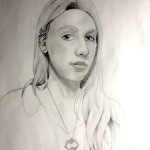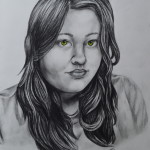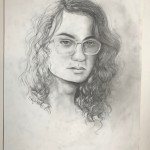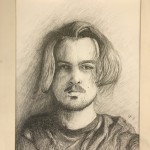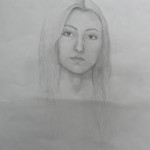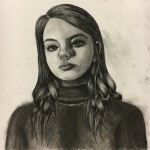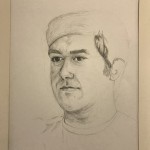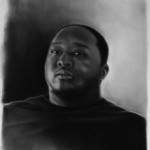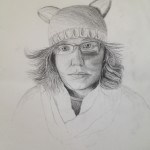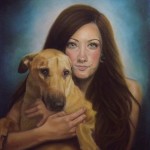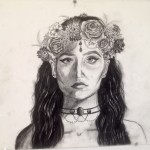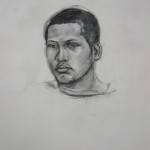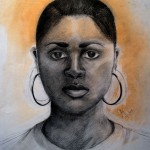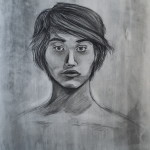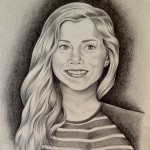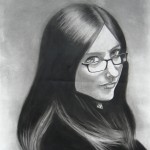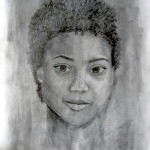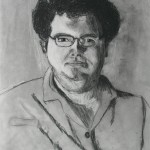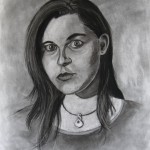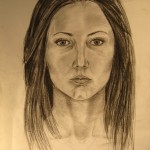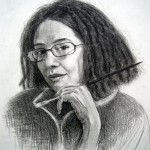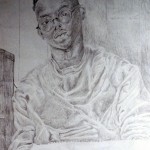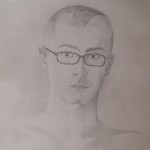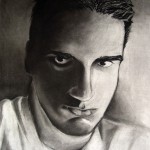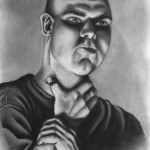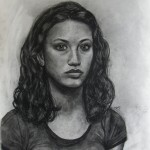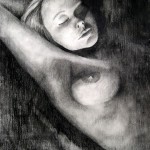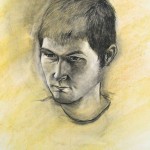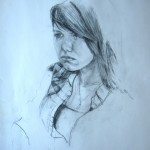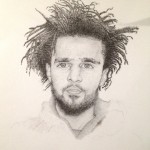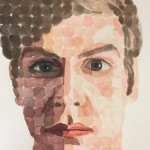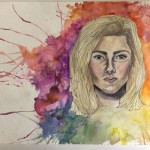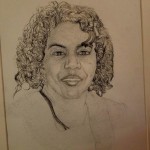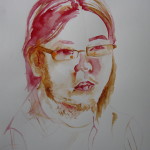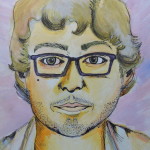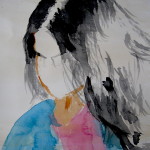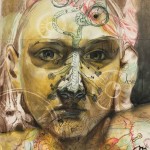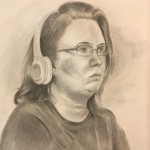Self Portrait from Observation Drawing 1 M. Aston
Objectives: To draw a realistic, recognizable self-portrait from observation.
*To create the illusion of volume in a portrait head/bust through the use of chiaroscuro.
*To develop tonal areas and shadows through crosshatching and directional markmaking.
*To study the drawing techniques of the great Draftsmen through research in the rendering of hair, shadows, facial structure, etc.
Size: minimum 18” x 24” portrait bust or life-sized figure
Medium: Graphite or Charcoal Pencil. Pastel ground color is optional
Subject: You may choose one of the following:
- A life-sized self-portrait from observation. A portrait bust or half figure.
- A life-sized standing or reclining portrait from observation: clothed, nude, or costumed
Instructions: Go to Artstor on library homepage (or the library art collection on the 3rd floor of Mandarino) and find at least five examples of realistic portrait drawings. If you use Google searches make sure that the image has high resolution so that it can be printed. Find exceptional examples of drawings (not photographs) that demonstrate each of the following:
1.) Composition (may be face only, bust, or half torso with hands included)
2.) Chiaroscuro (find an example with distinct shadow shapes)
3.) Cross-contour or Directional Markmaking
4.) Hair that looks like your hair (find examples of both the form and texture of the hair)
5. Example of an interesting or intense facial expression
Print each example full size on 8.5 x 11 paper and use them to help you draw your portrait.
To plan your composition, view yourself through a large mirror from different angles and under various lighting conditions. You may copy the composition of a master draftsman if this appeals to you. Light and shadow areas should form distinct shapes that fall across your face. Make sure the lighting is the same each time you draw! Sketch out the entire composition lightly as a gesture drawing. Measure the proportions of your face, your features, and the space between your features, then sketch out the shadow shapes. Once you are sure the proportions are correct you may begin adding lights and shadows. Apply straight directional markmaking for shadows and curving cross-contour markmaking to show the volumes of the face and hair. Finish off the facial features in detail in full chiaroscuro, slowly and patiently, with hatching and crosshatching to show volume and depth. Try not to blend or smear these hatched areas. Lines should fade as they approach the edges of the page. The background should be considered depending on the medium you choose. If a white background causes the picture to look unfinished, marks, tones, or washes should be applied to the background as well.
